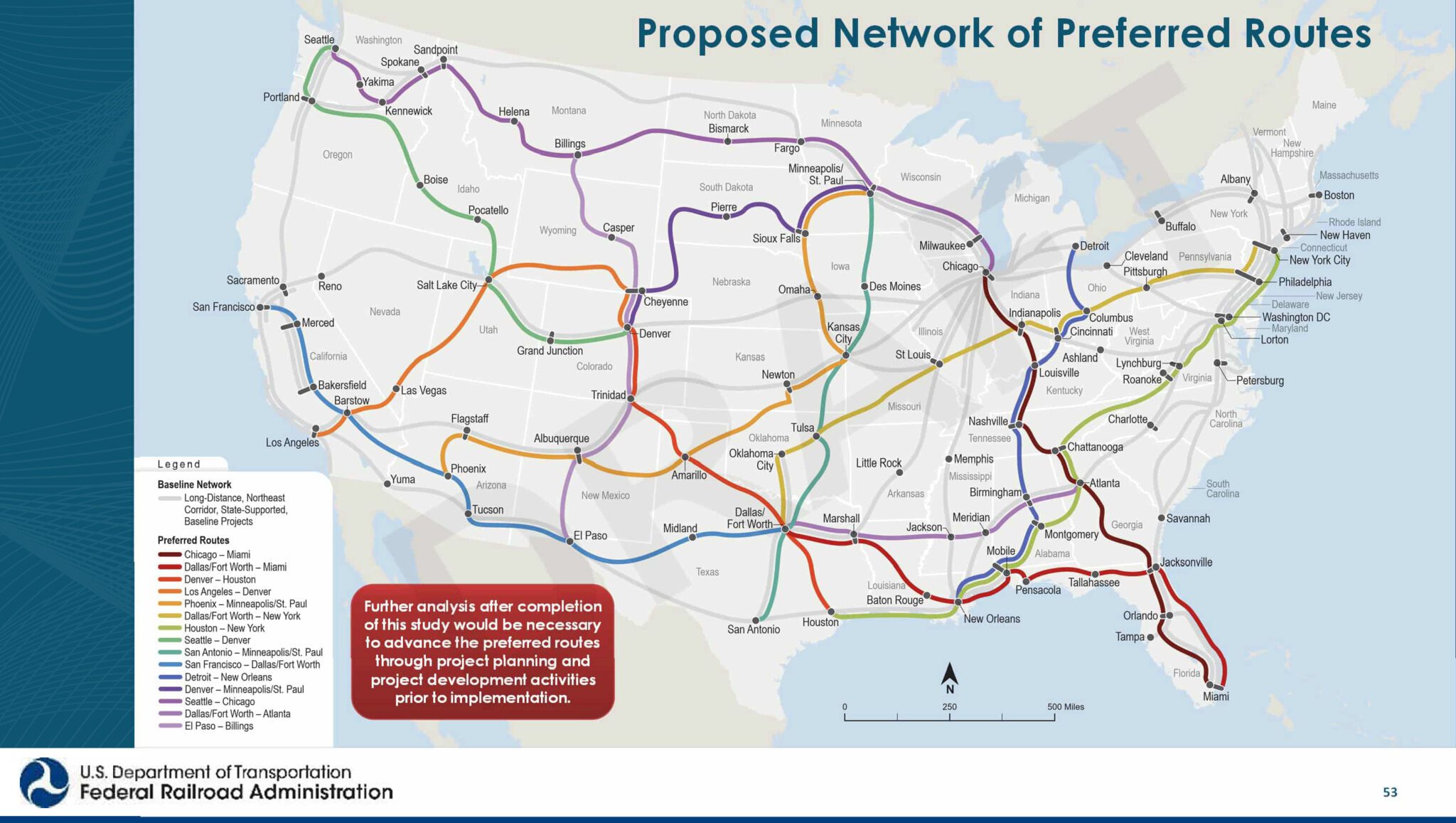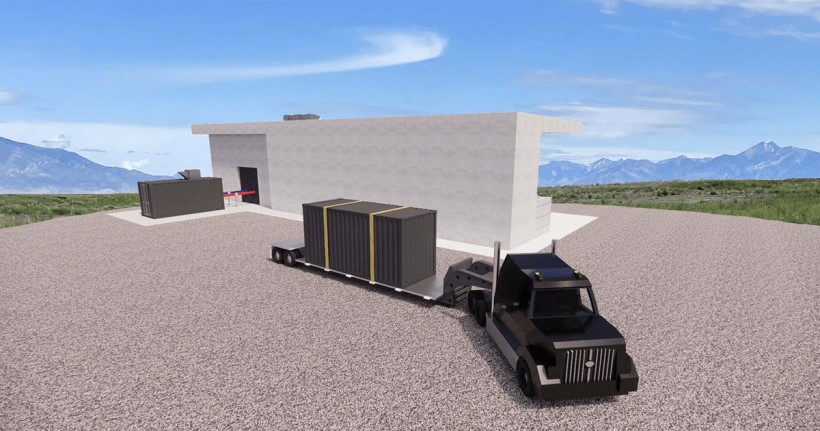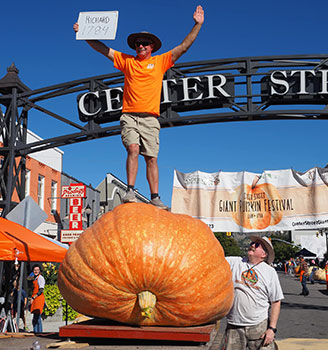10/03/24
Best of the West: Reviving passenger rail; solar workforce boom; monitoring water from space; portable nuclear generator; economics of outdoor rec; record-breaking pumpkin

The Western Governors' Association keeps you updated on the latest news in the West. Here are the top stories for the week starting September 30, 2024. (Photos courtesy of Adobe Stock Images, Federal Railroad Administration, Utah Giant Pumpkin Growers, and the DOE Office of Nuclear Energy)
Until recently, passenger rail projects have been collecting dust in the West and across the country. Now, fresh momentum has been growing for new and revived passenger rail projects across western states, with potential high-speed rail and long-distance projects on the horizon.
An ongoing study from the Federal Railroad Administration (FRA) is evaluating the restoration of daily passenger rail services on long-distance routes over 750 miles, including both discontinued lines and new routes.
The study, which was funded by the 2021 Infrastructure Investment and Jobs Act (IIJA), proposes 15 new routes across the country, with many of them passing through western cities and states.
One of the proposed routes is the former North Coast Hiawatha line, which ran through four western states from Chicago to Seattle until it shut down in 1979.
The revival of the North Coast Hiawatha route is thanks in large part to the Big Sky Passenger Rail Authority, which has spent years gathering support for restoring the rail service. As one of the proposed routes in the Corridor ID program, Big Sky Passenger Rail Authority received $500,000 in federal funding in December, and the group has been working on planning and designing the route since then. Given the renewed local and federal support, advocates hope that the line could reopen as soon as the early 2030s.
A few states south, five of FRA’s 15 proposed long-distance rail lines run through Denver as a major hub in the proposed network.
Outside of long-distance rail, Colorado’s Front Range could see a passenger rail system in the future that extends from northern New Mexico to southern Wyoming. In 2021, the Colorado Legislature set up the Front Range Passenger Rail District with the mission to design, fund, build, and operate a passenger rail system along the Front Range, where about 5 million of the state’s residents live.
Another highlight in new rail development is Brightline West, which broke ground in April of this year.
Brightline West is set to be the country’s first true high-speed rail line, connecting Las Vegas to Southern California at speeds of up to 200 miles per hour. The 218-mile route will take just over 2 hours, which is about half the typical drive time.
Additionally, the Brightline West project will support over 10,000 construction jobs and 1,000 permanent jobs after completion. The fully electric trains will also eliminate more than 400,000 tons of CO2 per year once operational in 2028.
Recently, FRA officially awarded Brightline West with a $3 billion grant for the project. While construction is already underway, heavier operations will begin early next year on the route.
Elsewhere in California, plans are in motion for a high-speed line to connect San Francisco to Los Angeles in under 3 hours. The first segment, which will run from Merced to Bakersfield, is currently under construction. In the future, the line will extend north to Sacramento and south to San Diego.
Nationally, nearly $10 billion has been made available by the federal government in the past year to support the expansion of passenger rail in the country. Additionally, the IIJA included $66 billion specifically focused on rail projects.
Check out Western Governors’ bipartisan policy on transportation infrastructure in the West to learn more about the Governors’ shared policy positions on transportation, including passenger rail.
Solar workforce boom: a new report shows that the nation’s solar workforce grew by 6% last year, nearing 280,000 jobs in the industry.
Western states are leading the way in the solar workforce boom, with California, Nevada, Colorado, and Utah all ranking in the top 10 for total solar jobs.
Additionally, Arizona and Nevada showed some of the highest rates of job growth in the sector, at 17% and 14%, respectively.
Measuring water with satellites: a recent paper from the Desert Research Institute in Nevada found that groundwater can be effectively monitored from space via satellite data and plenty of hydrologic science.
The innovative approach from OpenET looks at evapotranspiration, or the process of water moving from land surface to the atmosphere from evaporation and transpiration from vegetation.
In studies in Nevada and Oregon, researchers found that OpenET’s models can be used to accurately estimate the amount of groundwater used for crops on individual fields, and it can estimate the amount of water those crops consumed to highlight irrigation inefficiencies.
These tools could help states like Nevada update its knowledge of groundwater, as the state currently relies on groundwater basin assessments that are 50 to 70 years old. As the dryest state in the nation, Nevada relies heavily on its groundwater resources.
Portable nuclear generator: the Department of Defense broke ground recently in eastern Idaho on the country’s first transportable nuclear reactor.
transportable nuclear reactor.
Project Pele, named for the Hawaiian goddess of fire and power, will employ a generation IV reactor that is designed to be transportable.
It will generate between one and five megawatts of power for military uses in remote locations, which will cut down on the need for fossil fuel in those areas.
Economic impact of outdoor rec: in celebration of National Public Lands Day last week, Colorado Governor Jared Polis and Colorado Parks and Wildlife announced new data showing the continued growth of outdoor recreation in the state.
In 2023, outdoor recreationists spent $52.1 billion on trips and equipment, and contributed to a total economic output of $65.8 billion.
Additionally, the report found that outdoor recreation supports 404,000 jobs in the state, producing $22.2 billion in salaries and wages.
Take a look at Western Governors’ policy resolution on recreation and tourism to see their recommendations to accommodate increased visitation, improve visitor experience, and support local economies in the West.
Record-breaking gourd: a couple in Utah set the state record with a massive, 2,289-pound pumpkin at the Center Street Giant Pumpkin Festival in Logan last weekend.
weekend.
Ralph and Launa Laub broke the record set in 2022 by just two pounds with their giant gourd. Pictured is Jay Richard of Wyoming, who won last year’s contest and placed fourth this year.